Houstonia caerulea, bluet, is a native herbaceous perennial plant that grows in clusters about 4" tall. Included are variations - double bluets and 5 petaled bluets. Bluets spreads vegetatively by rhizomes (underground modified stems that grow near the soil surface) as well as by seeds. The plant blooms in spring: April-May.
Flowers
The small flowers are about a half inch or less across but sometimes they grow in profusion. The flowers have four petals that are white or bluish white with distinctive yellow centers.

The bluet flower exhibits dimorphism, meaning, that there are two types / forms of flowers. In one type, the anthers rises to the top of the corolla tube and are visible while the stigma is below due to a short style. This is called the called 'thrum' form.
In the left photo below, the 4 anthers can just be seen at the center of the flower. Each anther has two sections.
The next photo shows the side view and the bulge in the corolla tube just beneath the petals where the anthers are. This area is yellow and the narrower part of the tube below is green.
The next photo is a diagram of the flower showing where the anthers are and the stigma which is further down. There are 4 petals and 4 anthers but only 2 of each are shown in the diagram for simplicity.

In the second flower type the stigma extends past the top of the corolla tube because of a long style and the anthers are below. This is called the called 'pin' form.
The left photo below shows the stigma protruding out from the center of the flower.
The next photo shows the side view and the corolla tube is all yellow the width remains about the same until the sepals.
The diagram next shows the stigma rising above the petals and the anthers hidden down in the corolla tube. Again, there are 4 petals and 4 anthers but only 2 of each are shown in the diagram for simplicity.

Closeup of the divided stigma and part of the style below of a 'pin' flower.
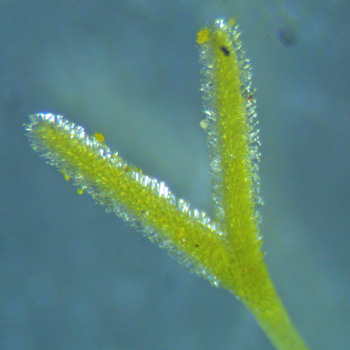
Closeup of the anthers and filament in the lower part of the 'pin' flower. The pollen is exposed. The anther/filament is attached to the inner surface of the corolla tube.

All the flowers are the same kind for a single plant. A single plant can have many flowers since the plant sends out rhizomes. Pollination can occur only between flowers of the other type. Having these two different types of flowers assures cross pollination.
Plant & Leaves
The left photo below shows the rosette of basal leaves and a few of the cauline (stem) leaves.
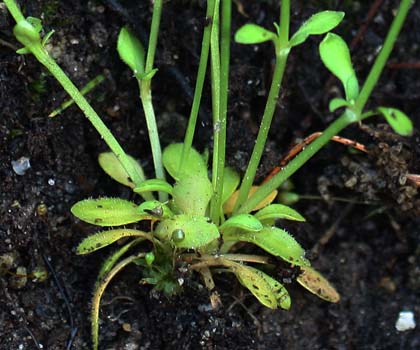
This photo shows the plant with the slender flower stalks rising out of the basal leaves. The plant is about 4" tall.
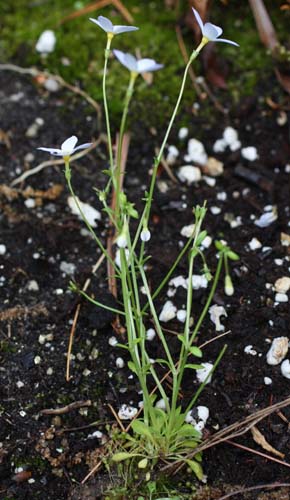
Here is a large population in the wild. Actually it is a mowed area.

Unusual varieties
Double flowers: In the field, in a large patch of bluets, these were spotted - double bluets - amazing! We came across these double flowers in the Massachusetts, 5/2023. There was a whole clump of them! Most of the flowers had 8 petals. A few looked like they had more. This is a rare mutation. These flowers are most likely sterile as double flowers frequently are. A look down the throat did not reveal any reproductive structures.
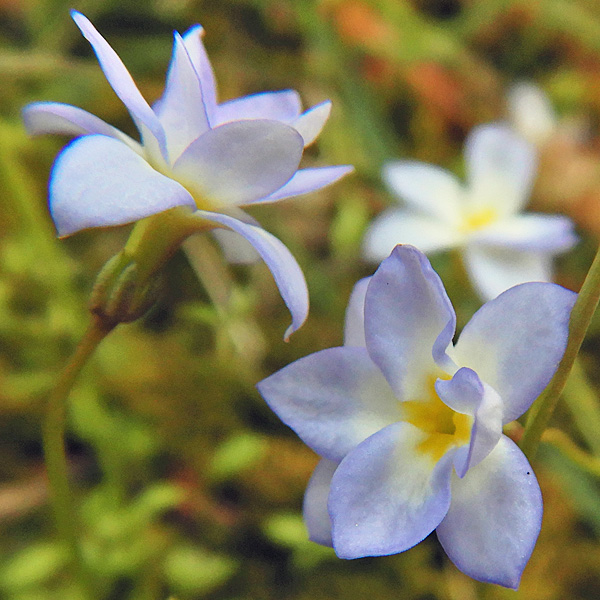
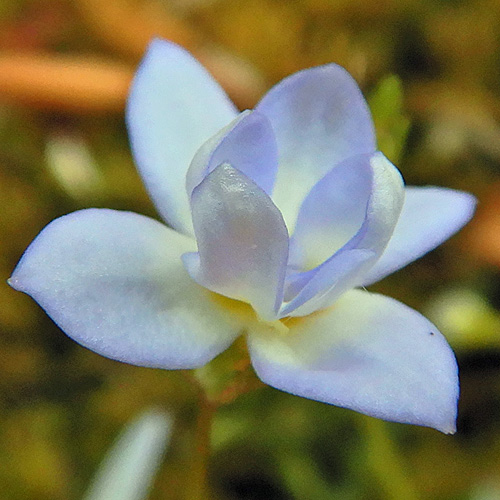

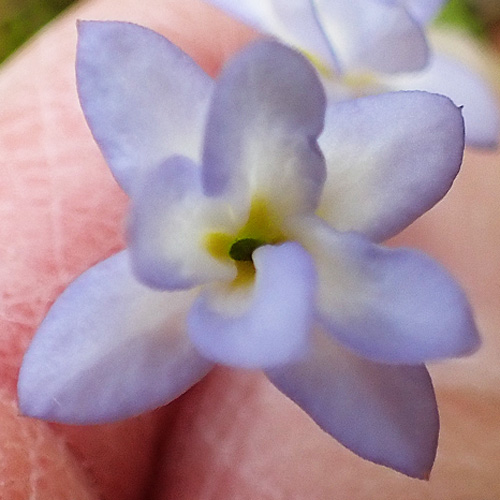
5 petal flowers: Occasionally, flowers with 5 petal can be found. These are 'thrum' form with the anthers rising to the top of the corolla tube. In addition to 5 petals, it has 5 stamens and 5 sepals.


Having 5 stamens is likely since the stamens are attached to the petals. A microscope look down the throat of a 5 petal thrum flower showing the 5 stamens

Dissected flower: microscope view of the anther with its short filament (red arrow) connecting to the corolla tube.
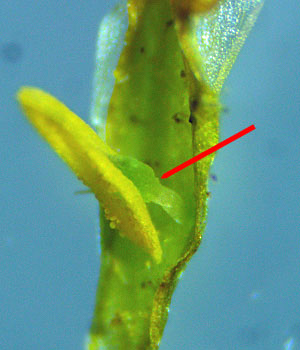
Dissected flower: microscope view of the pistil showing the twisted split stigma.
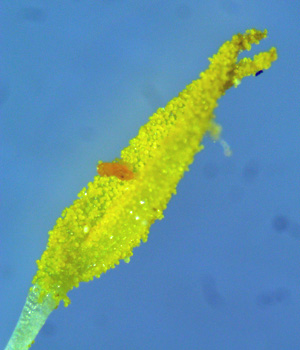
Pollen. Unchanged from the 4 petal flowers.

Corolla removed: microscope view of the 5 sepals and the style and twisted double stigma.
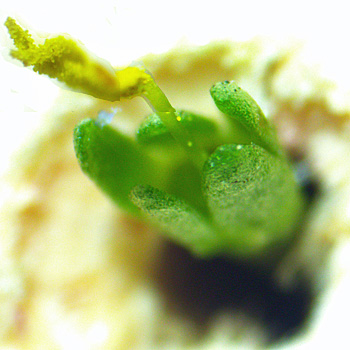
White flowers:
Occasionally, pure white flowers can be seen. Here the white is contrasted with the usual pale blue flowers.
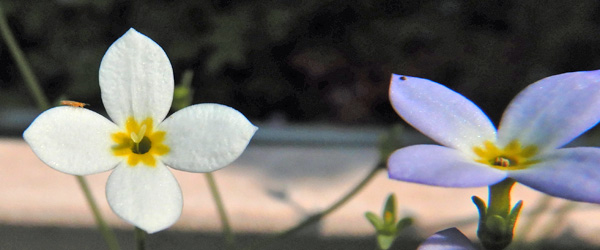
All photos are by H & M Ling: cultivation and Massachusetts.
Additional information
Links:
http://www.illinoiswildflowers.info/prairie/plantx/quaker_ladies.htm
http://www.mtcubacenter.org/plant-finder/details/houstonia-caerulea/
https://gobotany.newenglandwild.org/species/houstonia/caerulea/